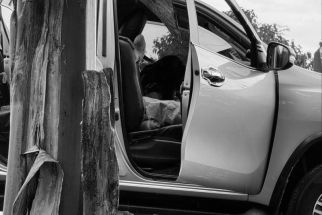Asking Questions, Finding Answers
Twenty-four-year old Reinabelle Co Reyes’ journey to discovering 900 “supermassive” black holes actually began when she was still a child.
Reina recalls her parents used to bring her and two sisters to educational museums, including the Griffiths Observatory in
“As a kid, I dreamed of becoming an entrepreneur, lawyer, and an architect, just like my favorite cousin, Kuya Raymond,” Reina shares. “I also dreamed of becoming an astronaut but I did not pass the height requirement.”
Reina grew up in a typical Chinese-Filipino home. Her parents run a small hardware store at the heart of
Reina is the middle child of entrepreneur parents Ramon and Botan. Her elder sister Rachelle is a Commerce graduate of
Reina currently lives in
“For the curious, my name ‘Reina’ means ‘queen’ (in Spanish/Filipino), ‘Belle’ means ‘beautiful’ (in French) and ‘Reyes’ means ‘kings’ (in Spanish) – so, in a phrase, ‘beautiful queen of kings,’” Reina wrote in her personal website.
Reina is a former scholar of the Science Education Institute of the Department of Science and Technology.
She received a diploma in Particle Physics at the
Currently, Reina is on the second year of a doctoral program in Astrophysics at the
The young astrophysicist also received the Chambliss Astronomy Achievement Student Award at the annual meeting of the American Astronomical Society in January.
Discovery of 900 black holes
Reina led a team of scientists of the Sloan Digital Sky Survey in the discovery of 900 “supermassive” black holes in nearby galaxies.
Her story landed on front page of major dailies, including The Philippine STAR.
“This is like searching for a needle in a haystack,” Reina says of her discovery.
A black hole is a region of space in which the gravitational field is so powerful it prevents even light from escaping.
According to research, when something falls into a non-rotating uncharged black hole, the falling object is absorbed.
“The objects we are targeting are very rare and are not immensely bright. We searched through a million objects and found 900 of these. My work is focused on figuring out how rare these objects really are,” she explains.
“This is not as simple as it sounds,” she points out, “because one has to carefully figure out the difference between how many objects we have found versus how many objects there really are. For example, the telescopes will miss those objects that are too faint to be detected, so those have to be taken into account.”
The discovery was the culmination of a five-year study spearheaded by Nadia Zakamska, a long-term postdoctoral fellow at the
Reyes and her team presented their work before the astronomers and other scientists at the meeting held in
“The project is the culmination of a five-year long campaign to find this particular type of black holes, specifically very massive black holes, in the centers of galaxies that are shrouded by large amounts of gas and dust – we call these objects ‘obscured quasars,’” Reina says.
“Professor Strauss, a leading expert on quasars and extremely successful ‘quasar-hunter,’ came up with the idea for Nadia’s thesis and suggested this as my first research project at
“The scientific conclusion of our study is that these hidden quasars are as common as the quasars that are not hidden, which are detected in large numbers – tens of thousands. This result has significant implications for our understanding of the nature of these objects which is not yet completely understood,” she adds.
Reina further explains that almost all galaxies, including the Milky Way, have black holes in their centers. “In some galaxies, lots of matter is falling into the black hole and in the process a lot of light is emitted and we have a quasar – in fact, the quasar outshines all the stars in the galaxy.
“The details of this process and its connection with the process of galaxy formation is not yet completely understood and is an active branch of research. The jury is still out, but our work is an important contribution toward a fuller understanding of this amazing phenomenon,” Reina says.
“Go for it! Astronomy and astrophysics are rich and exciting fields that offer plenty of opportunities for young scientists to contribute. Master the basics, keep up with the latest discoveries, don’t stop asking questions – and finding answers,” Reina says.
- Latest
- Trending


















